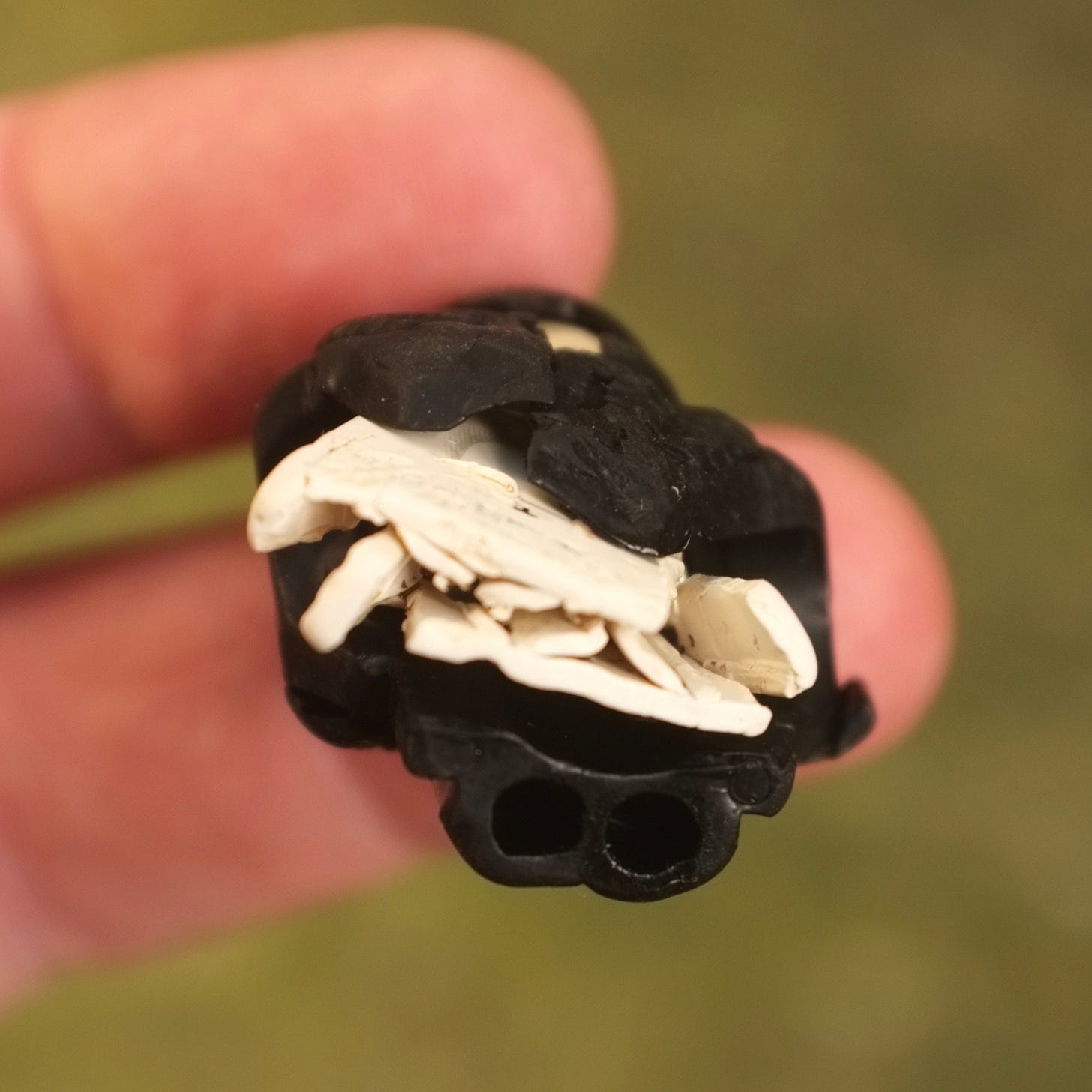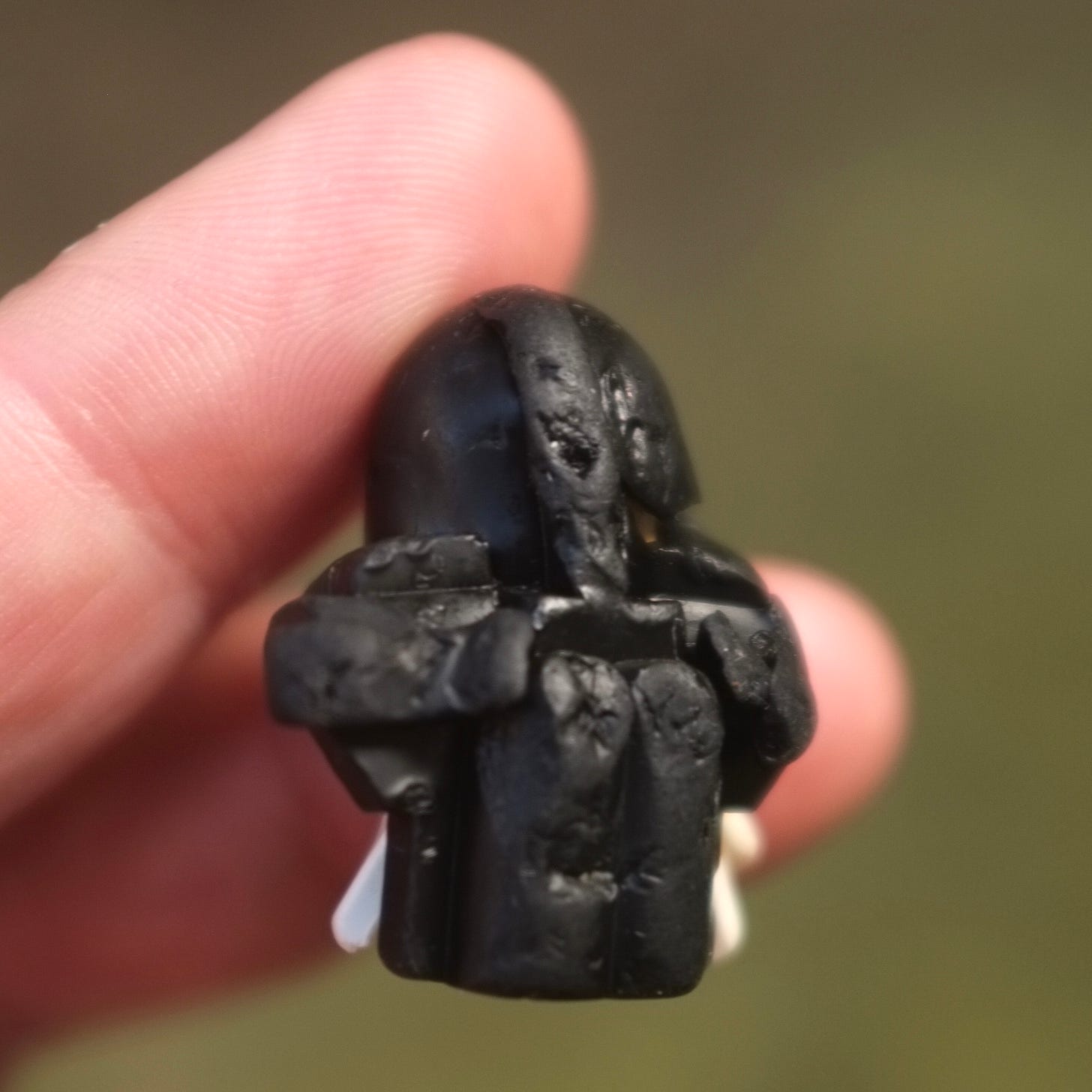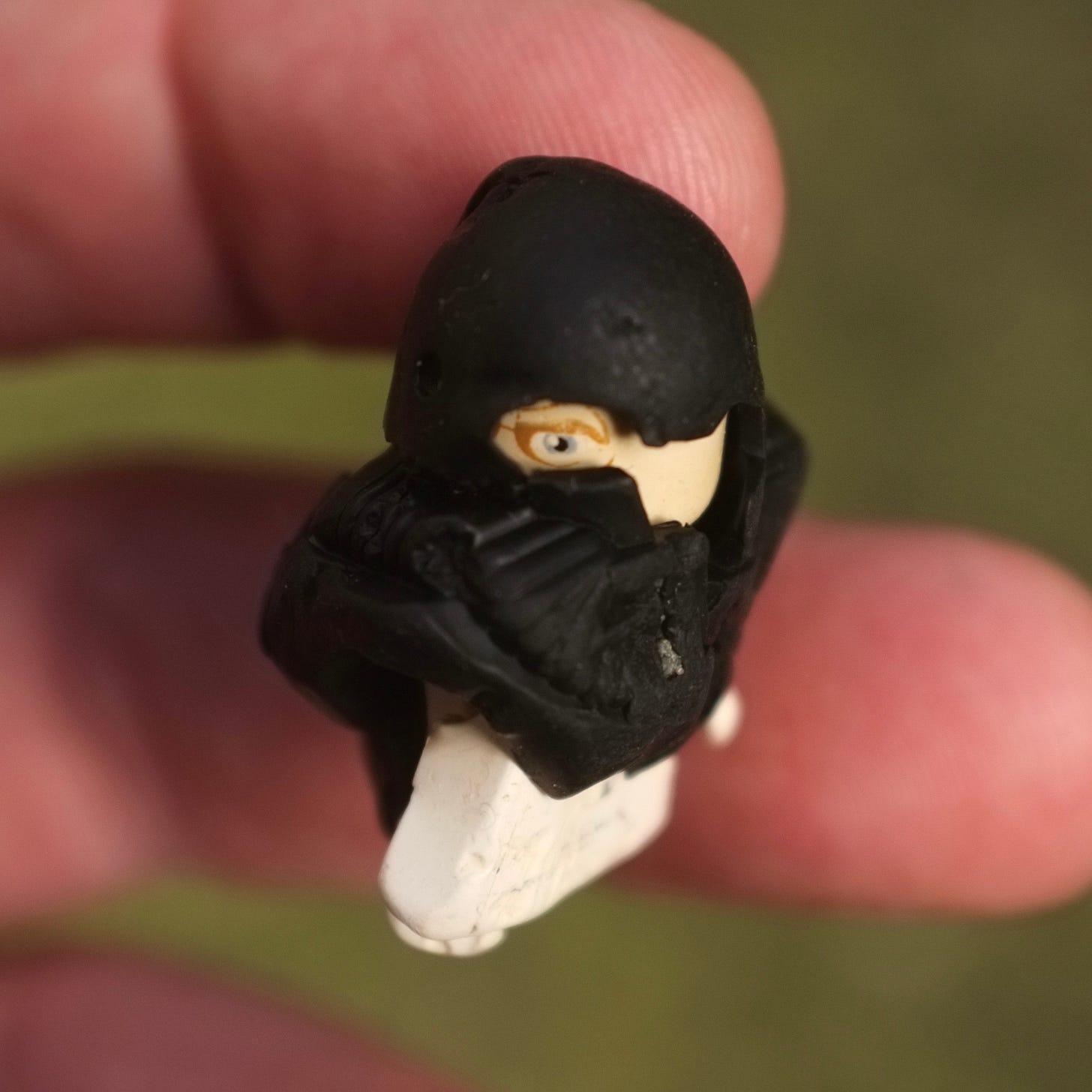Jeanette Winterson: “Every child talks to their stuffed animal, or to a doll, or sometimes a blanket, a potato-man, or even a painted stone. It’s a kind of natural pantheism that seems hardwired in children. Everything is alive.”
I went out yestereve to catch the last of the light. The days are shortening now, and night comes quickly. The body of the storm had passed, but the wind was still high. There were two other people on the beach: a Father and daughter playing by the creek. She was a spot of bright pink in the sombre landscape.
On the wrackline, among the fresh stormcast seaweed, I saw this little piece of plastic. I almost didn’t pick it up— I was full of a hurrying wild energy— not much time before dark.
Turning it over, I could see it was the remains of a Lego person, armless, legless, wearing what looks like a scuba tank:
(Or maybe Star Wars? Something about the white torso and the black armour over-layer.1)
Lego is a whole subgenre of beach-combing. In 1997 a ship called the Tokio Express was capsized by a rogue wave, and a container of Lego spilt into the sea. This is known as ‘The Great Lego Spill’. Along the coast of Cornwall, people still find Lego from this event.2
“Out of the 4,756,940 Lego pieces on board, about 3,178,807 were light enough to float and are what is commonly found across 40 beaches in Cornwall, reported Mario Cacciottolo for the BBC in 2014.” (Smithsonian: After 25 Years at Sea, Shipwrecked Lego Pieces Are Still Washing Ashore on Beaches in England)
I don’t find Lego that often. When I do, it tends to be small, primary-coloured bricks that I don’t bother to pick up. But human-made, human-shaped things interest me. Like dolls, they seem alive.
I walked quickly towards the creek. As I came closer, I recognised the people: they live somewhere up the road and are often out walking together. The little girl stared at me wide-eyed. “She likes your boots,” said the Dad. In Spanish, to his daughter, he said something about boots, botas. Mine are orange, knee-length; hers were pink unicorns, with faces, ears, and horns. She was holding a wet duck-feather in her hand, barbs plastered to the shaft, and had tears in her eyes from the cold wind. She stared at me silently, but we walked a little way together and I pointed to a long black seagull wing-feather, with a spot of white, lying on the grey stones— “There’s a good one.” When she picked it up, she handed me the wet feather. Like a trade. I thanked her and walked on. After a polite distance I stuck the wet feather upright in the pebbles.
Here’s the thing about the Lego dude, though:
Totally mashed, but with this delicate eye intact, protected by the helmet. Jetsam gazes back. (The eye of the figure— the eyes of the child, who watched but didn’t speak.)
Wading in the creek, something struck me lightly on the breast. Seagull shit, brown and white, across the front of my new jumper. (It was the first time I’d worn it. I bought it yesterday afternoon from the Sallies: teal wool, diagonal basket-weave like a pie-crust.) So that was that. Holding my hair in my hand so it wouldn’t blow into the shit, I turned for home.
By rights getting shat on should happen more often— seagulls are often overhead.3 It’s lucky though, right?4
This morning the first snow was on the mountains.
Someone will know.
There’s even a book about the Cornwall Lego: Adrift. Lego Lost at Sea Instagram
When the real estate agent came to take pictures of the Free Multiverse— my house— for his sale brochure, seagulls attacked the drone.
Last time it was on my head.







